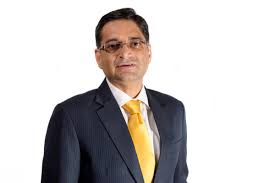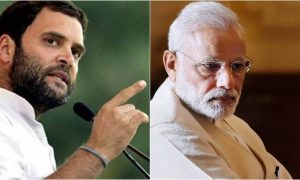The Rules provide for a 3-tier monitoring mechanism to regulate OTT platforms, social media intermediaries and digital news media, which includes self-regulation, self-regulating organisation (SRO) and an oversight mechanism
By Saket Shukla
The Government of India introduced the keenly anticipated Information Technology (Intermediary Guidelines and Digital Media Ethics Code) Rules, 2021 (Rules) to regulate content over different digital platforms. The Rules seek to cover social media platforms, OTT platforms and digital news media. There has been a growing discourse on regulating content on OTT platforms given their expansive reach and courts have been proactive in dealing with related cases. Reportedly, the Supreme Court had, in a matter where the issue of control and regulation of OTT platforms was in contention, remarked that the Rules lacked teeth. The Government seems to have clarified that their intent was to create a balance between no censorship and internal self-regulation.
What the Rules mean
The Rules provide for a 3-tier monitoring mechanism to regulate OTT platforms, social media intermediaries and digital news media, which includes self-regulation as the first step, followed by regulation through a self-regulating organisation (SRO) and finally, an oversight mechanism by an inter-department committee having an authorised officer of a rank not below that of a Joint Secretary (Committee). The Committee has wide powers including to recommend censures, require apologies to be issued, issue warnings as well as to take down content.
The Rules also require OTT platforms and digital news media to adhere to a code of ethics, while specifically requiring the OTT platforms to classify their content based on the nature and type of content.
While one can expect the new regime to find its feet over time, the Rules do seem to pose some initial challenges which may need ironing out. Some of these are briefly discussed as follows.
CBFC vs Committee
The Rules require ‘online curated content’ to be classified and rated according to age suitability. This would also apply to films released on OTT platforms as these are online curated content. Films being released on screens are already subject to the certification from Central Board of Film Certification (CBFC), a statutory body formed under the act of the Parliament, the Cinematograph Act, 1952. If the same film is released on OTT platforms, then a complainant could challenge the content certified by the CBFC and potentially, the same content would be reviewed by the Committee formed under the Rules, i.e., a delegated legislation. Ideally, if certain content has been cleared by the CBFC, then as long as the certification is not changed, one would expect that the Rules should not apply to it.
Digital News Media
The Rules define digital media to include ‘publishers of news and current affairs’, which can be of different types. Broadly, the categories of such publishers are: (a) print media organisations; (b) broadcasting organisations; and (c) stand alone news media portals (e.g., Newslaundry and ThePrint), which publish content online. Online news publishers exclude newspapers and replica e-newspapers. The first category of such online news publishers is already governed by the self-governance code of the Press Council of India while the broadcasting organisations are covered by the norms under Cable Television Networks (Regulation) Act, 1995. There may be merit in reconsidering whether these organisations should be subject to the regulations under the Rules merely because they publish news, as appeals under the Rules would lie before the Committee which consists of bureaucrats and exercise broad powers. Many of these print media and broadcasting organisations would have the same editorial team looking after both digital and traditional content and practically, the additional compliances could have been avoided.
The third category of publishers of news and current affairs were until now not regulated given that they do not rely on any public resources (e.g., airwaves like in the case of broadcasters) and do not require a license to operate. The Government’s intention to treat print and digital media similarly was clear when the FDI limit in digital news media was capped at 26%, at par with the traditional media. While a foreign hand in Indian news could be moot, whether a mere restriction on foreign investment would serve the purpose is doubtful in a digital hyper connected world where physical registration of digital companies is not moot. If the intent is to treat news portals at par with the print sector, then instead of subjecting the latter to the bureaucratic oversight under the Rules, both could have been spared this extra supervision.
Notably, the Rules have been framed under the provisions of the Information Technology Act, 2000 in exercise of the Central Government’s powers to lay down a procedure for blocking by an intermediary or government agency of public access to certain information and the guidelines to be followed by intermediaries. On first blush, an online news entity may not qualify as an intermediary, which is understood as a person who on behalf of another person receives, stores or transmits electronic records or provides service in relation to such records. Consequently, the applicability of the Rules to online news entities is itself in doubt.
To conclude, there is rationale to regulate digital media given the size of our country, diversity and sensitivity around social issues and the introduction of the Rules is a welcome step although whether they should extend to regulating news media in a manner similar to OTT platforms and social media intermediaries is worth considering.
The author is a co-founding partner at Phoenix Legal.





































